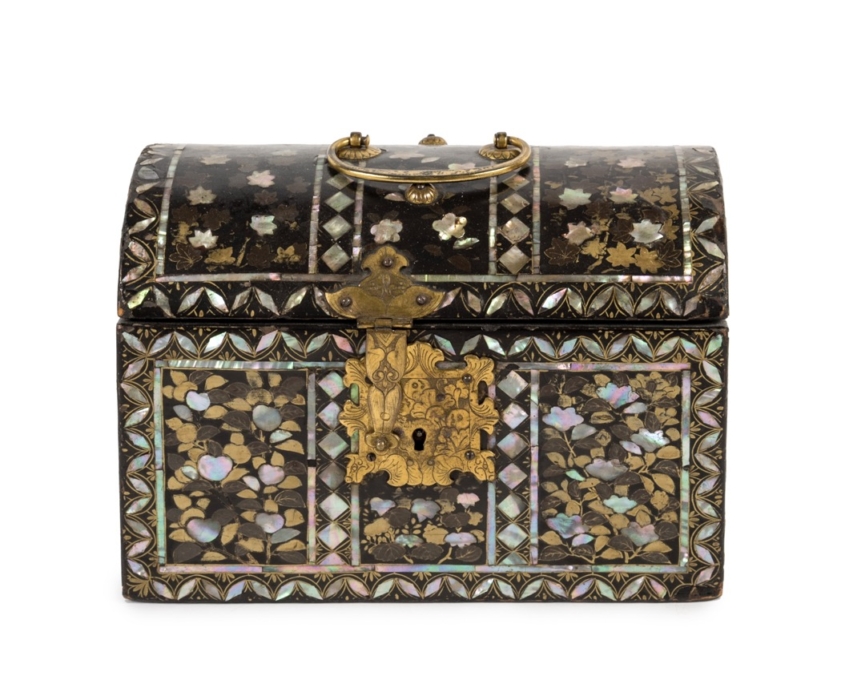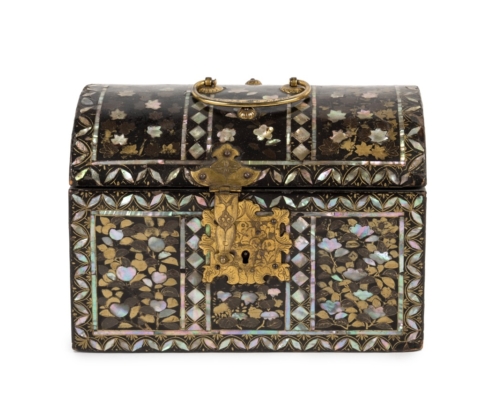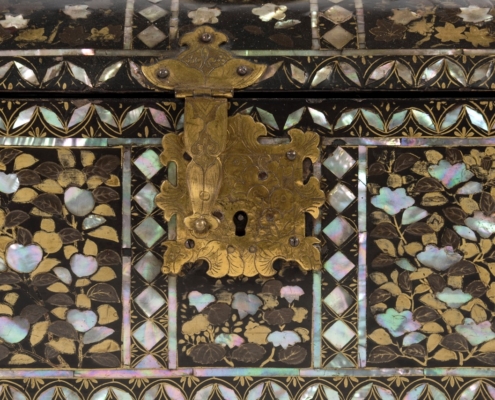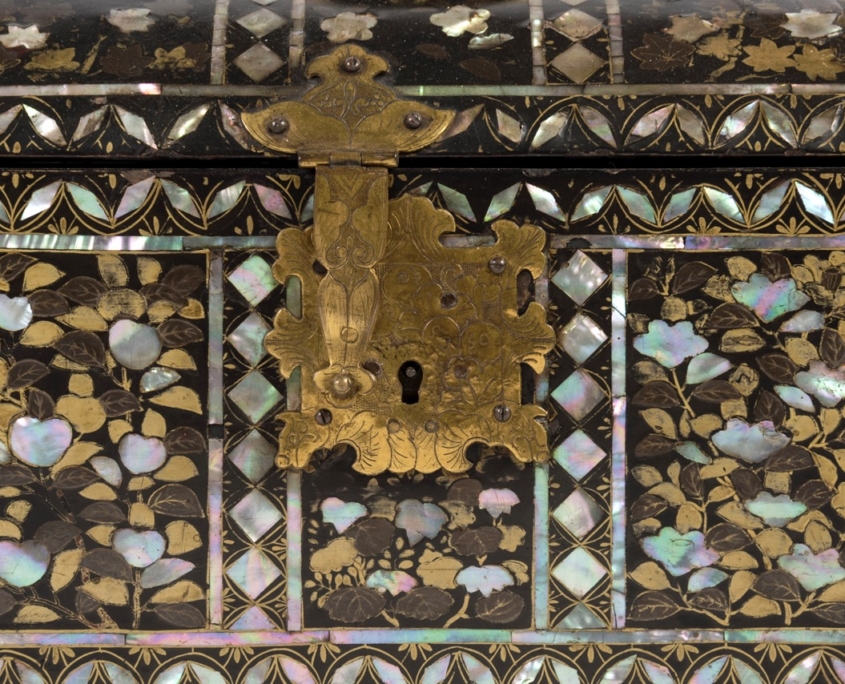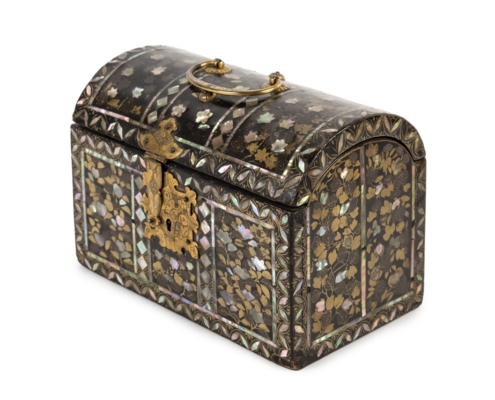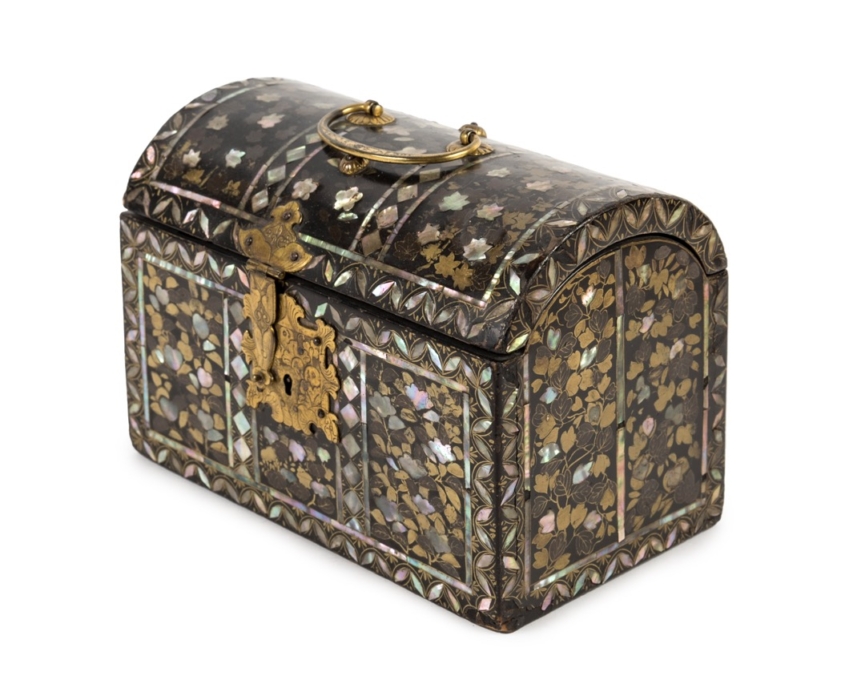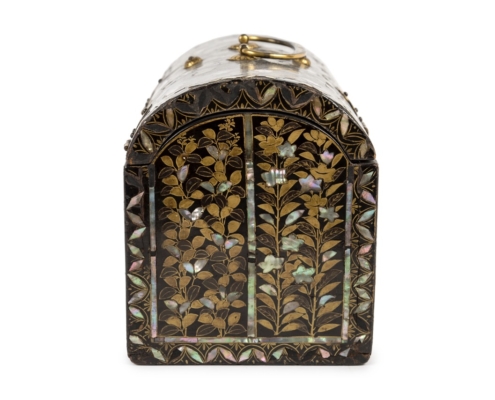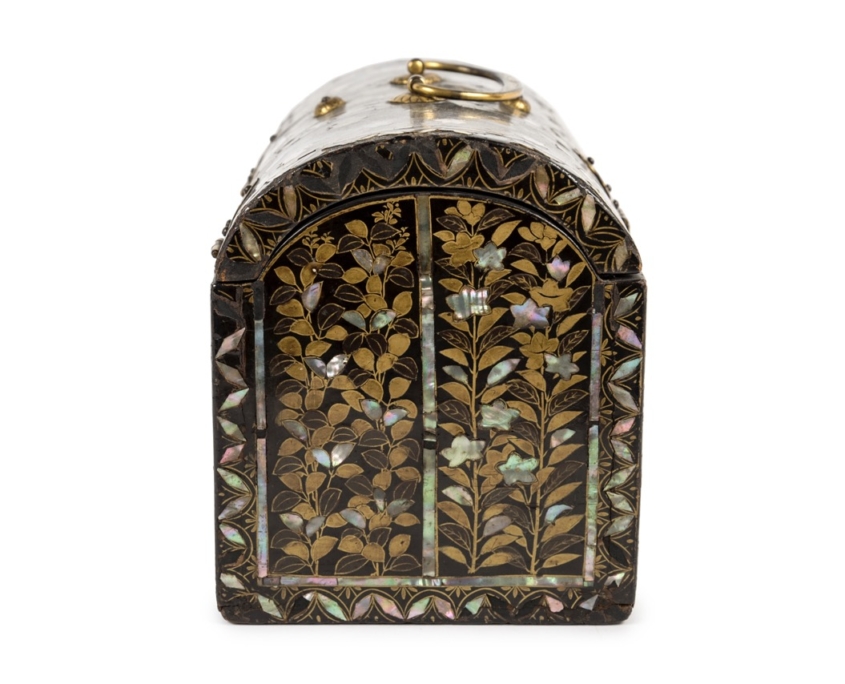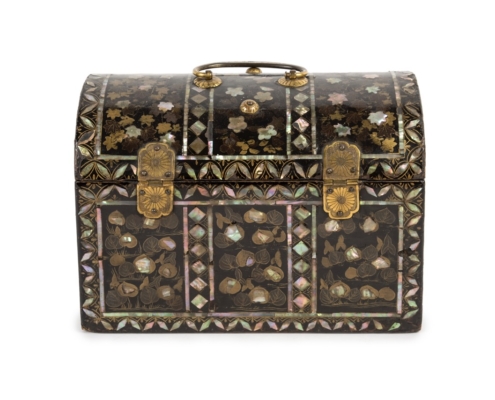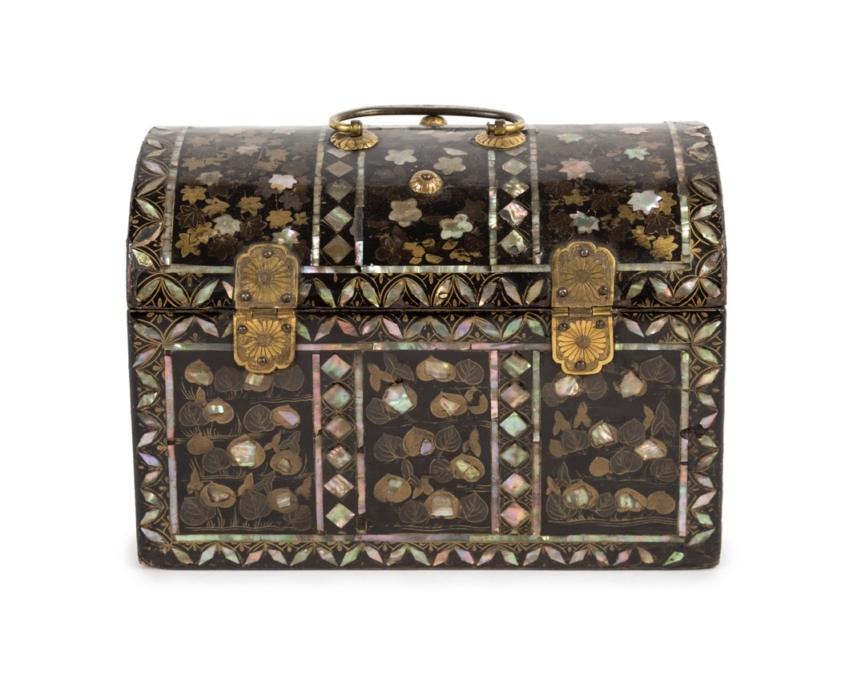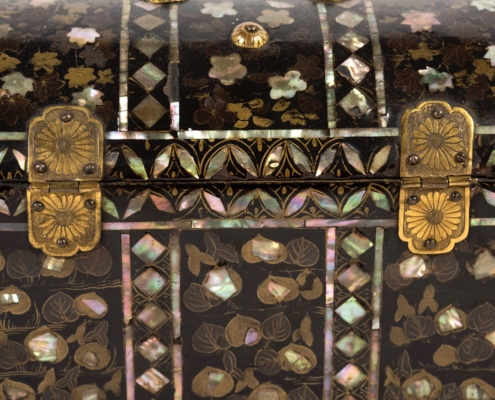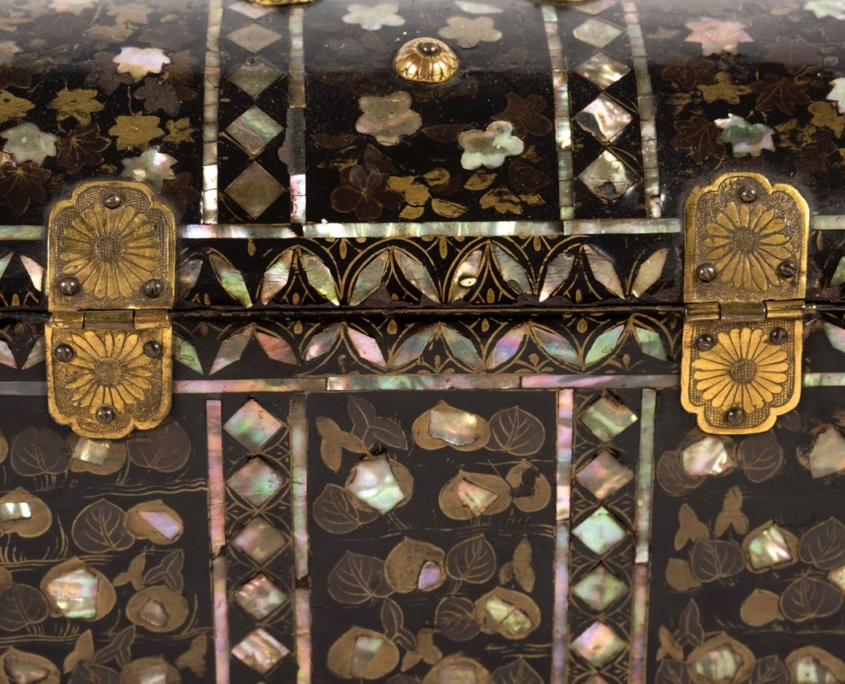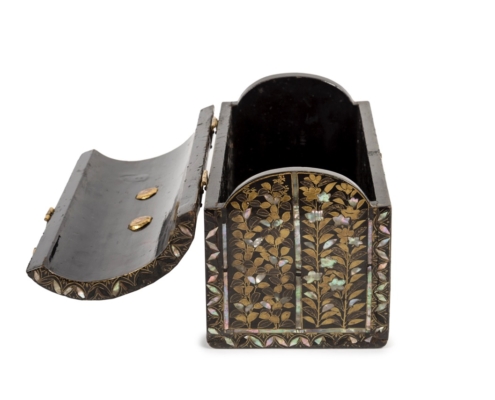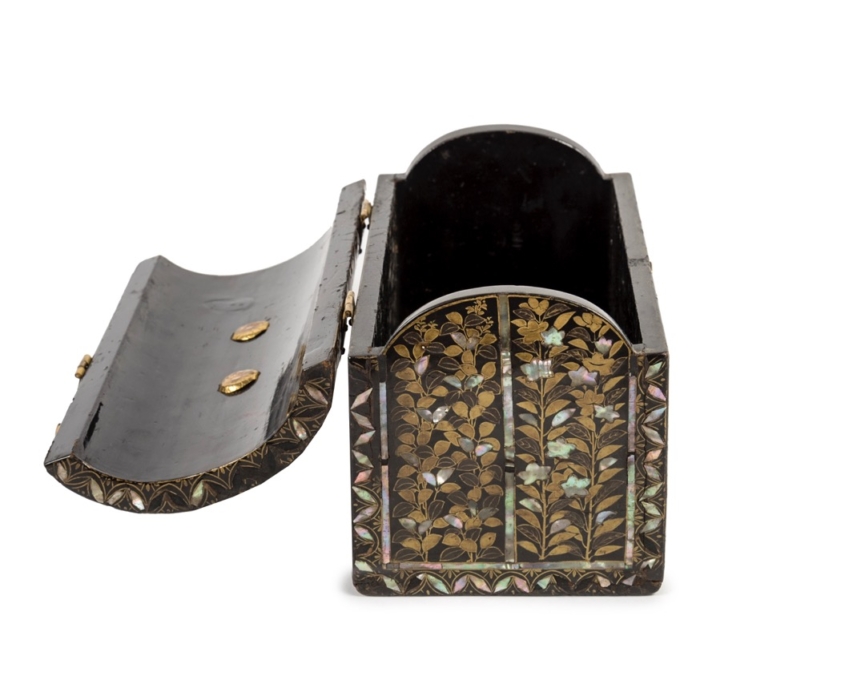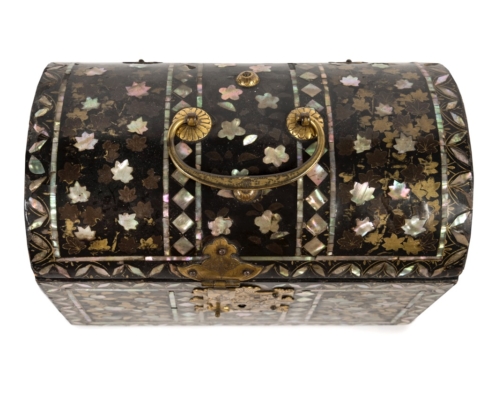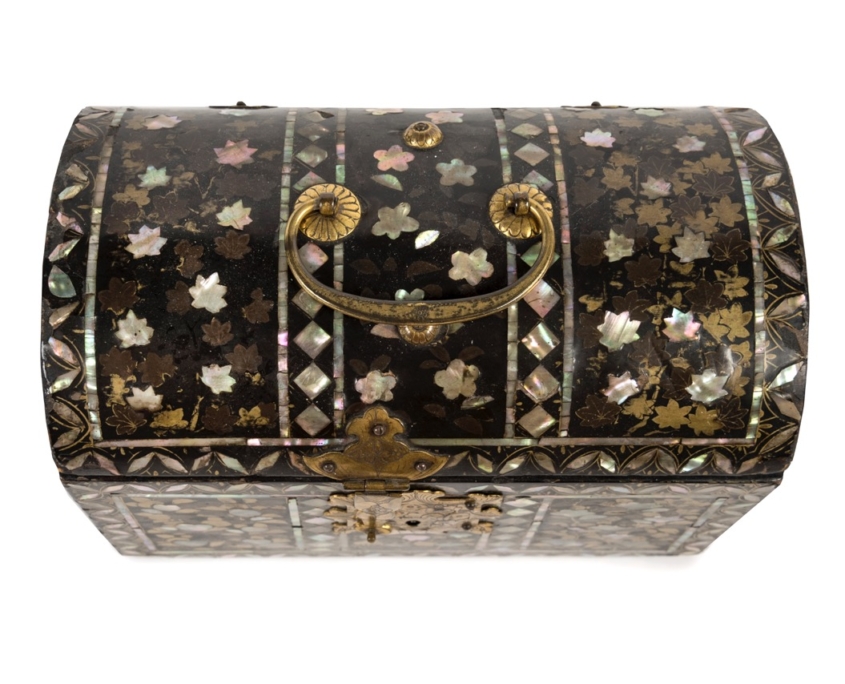NAMBAN CHEST – 1600, AZUCHI MOMOYAMA
Reference : 2021-925
Namban chest with a semi-cylindrical lid made of black lacquered wood (urushi) with gold lacquer (maki-e) and inlaid with mother-of-pearl (raden).
Decorated with three main bands of floral motifs, middle surrounded by vertical bands of mother-of-pearl inlaid lozenges and framed by the hanashippô pattern (overlapping circles forming petals).
On the lied, acer (momiji) and plum tree flowers (ume). On the front side, branches of citrus tree tachibana (Citrus tachibana), vine leaves and peonies (botan). On the right side, bellflowers (kikuyo) and pederas (hagi). Water plantains orSagittaria (omodaka) on the back side and morning-glories (asagao) on the left side.
Gilded copper fittings chiseled with chrysanthemums, at the bottom what appears to be the head of a dog to either side.
Interior in black lacquer.
Japan – Azuchi Momoyama period (1573-1603)
Height: 6.3 in. (16 cm) – Length: 10.2 in. (23 cm) – Depth: 5.1 in. (13.5 cm)




